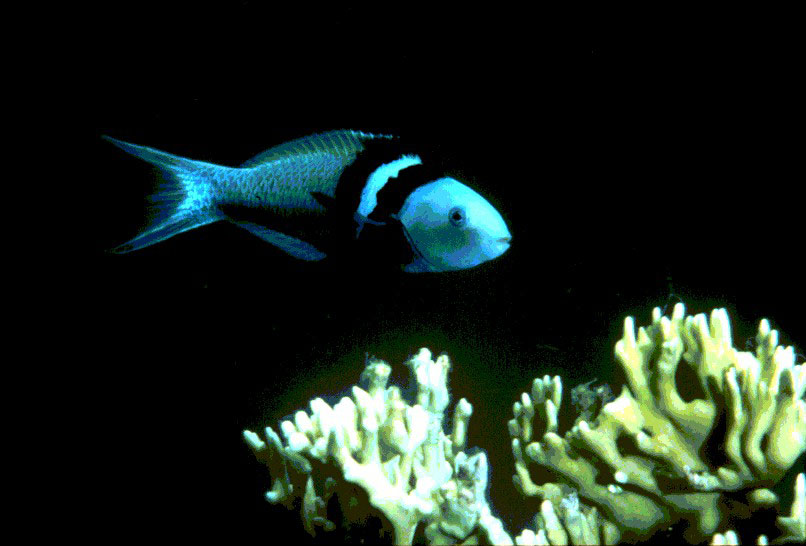
A Difficult Youth Is a Good Thing for a Fish, Report Scientists
A tough early life turns out to be a good thing for a fish, according to scientists at the University of California, Santa Barbara.
They discovered that fish larvae that survive a long, rough, offshore journey eventually arrive at a near shore reef in good condition, and that they thrive afterwards.
In contrast, locally produced young have a relatively easy life and they arrive on the reef (near the area where they were spawned) in a variety of conditions –– from poor to good. Only the young that are in good condition survive after a month on the reef.
"This research delves into one of the major questions of how populations are connected through dispersal," said Scott Hamilton, a postdoctoral fellow in the Department of Ecology, Evolution, and Marine Biology (EEMB) at UC Santa Barbara. "We want to know where the young of many marine organisms are coming from and going to, and what factors determine whether they survive."
Hamilton is the first author of the report on the team's findings, published in this week's on-line version of the Proceedings of the National Academies of Science (PNAS). The results point to significant policy implications for the planning of marine protected areas, a topic of worldwide concern.
"It turns out that not all settlers arrive equally prepared for the rigors of the reef, and the probability that a new recruit will grow up to reproduce successfully may depend on where it came from," said Robert Warner, a professor of ecology, evolution, and marine biology.
The scientists used a powerful tool to detect this information: chemical analysis of the ear bone of the fish. The ear bones, also called otoliths, are hard calcium carbonate structures located behind the eyes and below the brain of the fish. The otoliths grow a ring every day from birth, and these rings, like tree rings, hold vast amounts of information about the life of the fish. For example, the spacing of the rings indicates how quickly the fish grew at different periods in its life.
The otolith serves as an internal tag, or tracking device, that reveals the history and location of the fish during its travels. The chemical composition of the ring indicates the type of water in which the fish is located on any particular day.
A fish that is traveling near a populated shoreline collects a higher amount of trace metals, such as lead, in the rings of its otolith. The scientists explain that water near urban areas has higher concentrations of lead due to the run-off from human activities.
Each ocean area has a particular chemical "signature" or "fingerprint" that is incorporated into the ring of the otolith as the fish pass through. Thus scientists are able to map the history of the travels of the fish by chemical analysis of the otolith.
The results surprised the scientists. "This information went against our expectation," said Hamilton. "We expected near shore fish to get back and do well, particularly because they are in nutrient-rich waters, which is a good place to be."
As natural resource managers plan for marine protected areas and marine reserves, they need to know the source of the fish living there.
"We have been measuring ‘connectivity' –– the proportional contribution of different sources to the population in any particular place –– by the numbers arriving," said Warner. Survival may depend on where the fish originated, he explained.
It is generally agreed that a good knowledge of connectivity between marine populations is critical to spatial management of marine resources, including marine reserves.
The authors point out that connectivity measured by the numbers may be very different from "realized connectivity," which is determined in part by differing survival rates of the young recruits.
The fish that the scientists analyzed in this study is the bluehead Wrasse, a fish that is common in the Caribbean Sea. Warner has studied the bluehead Wrasse since the late 1970s.
A third author of the PNAS paper is James Regetz, a programmer and analyst with the National Center for Ecological Analysis and Synthesis (NCEAS) at UCSB.



